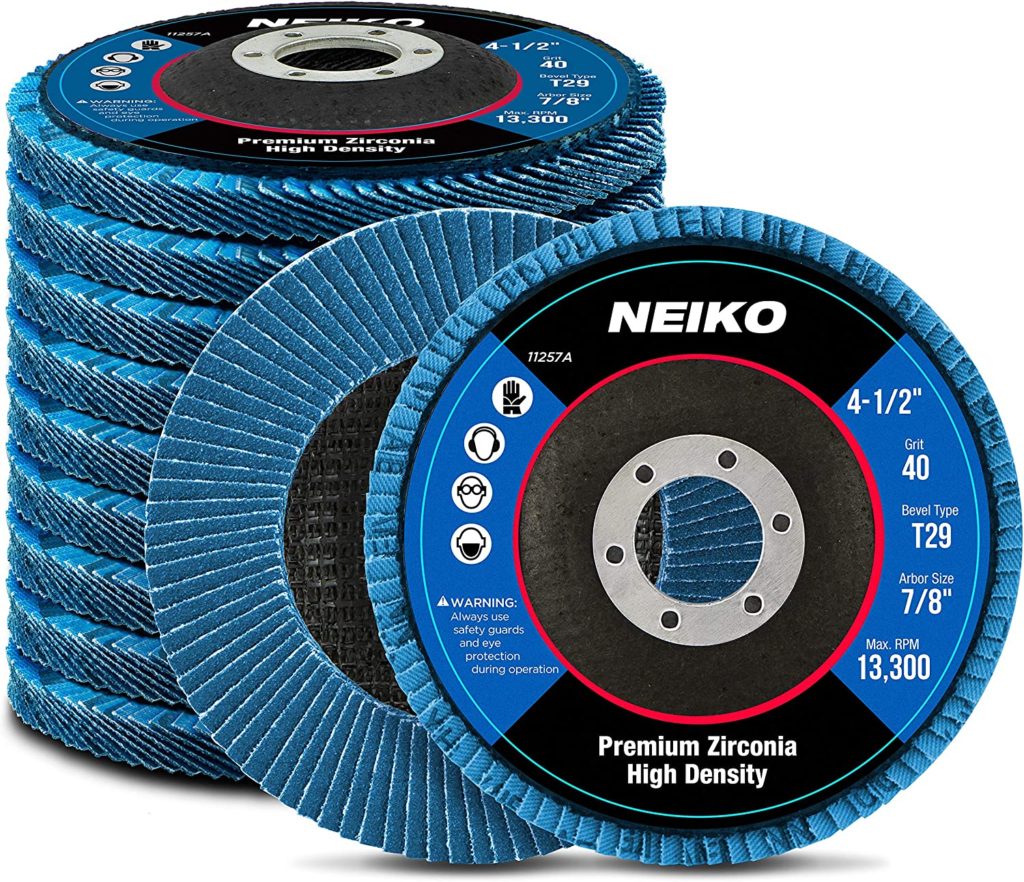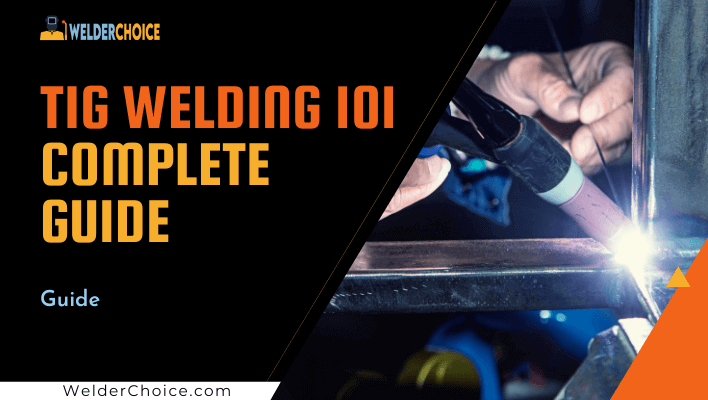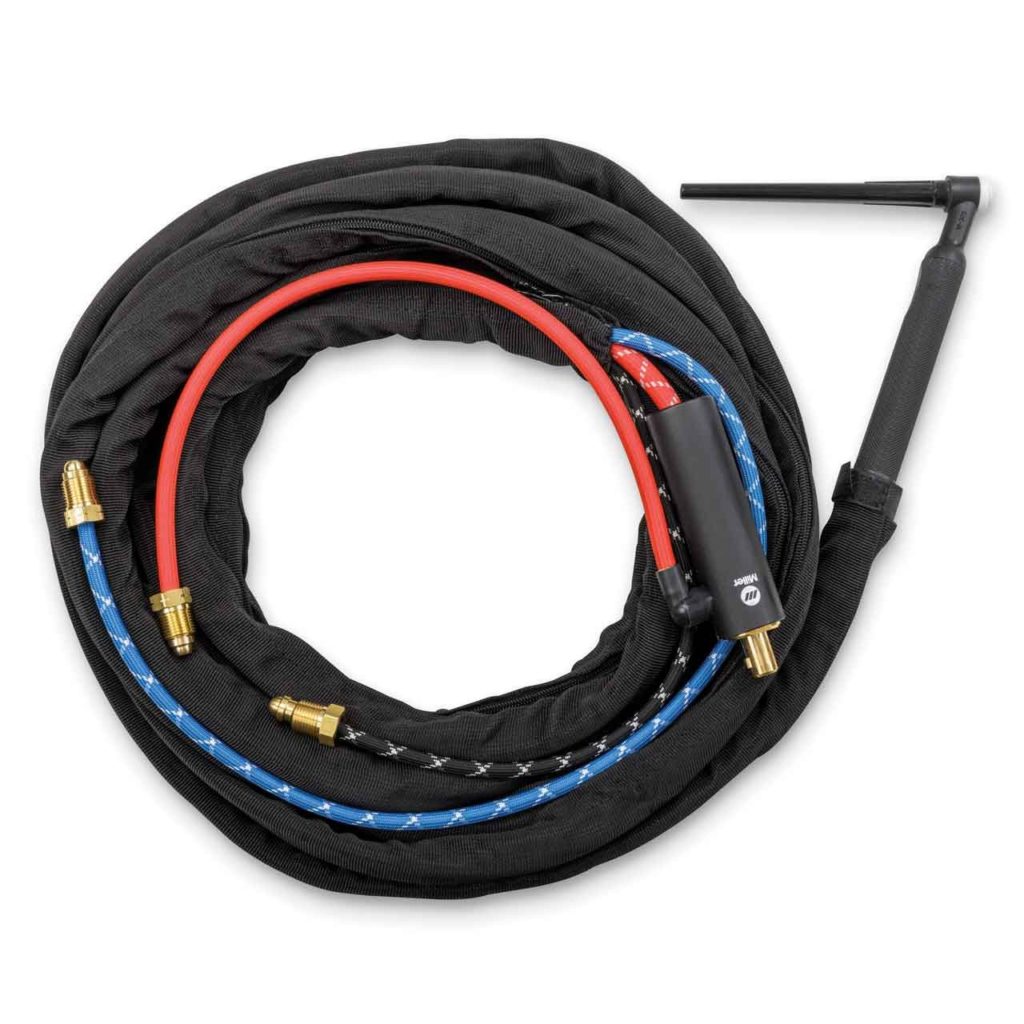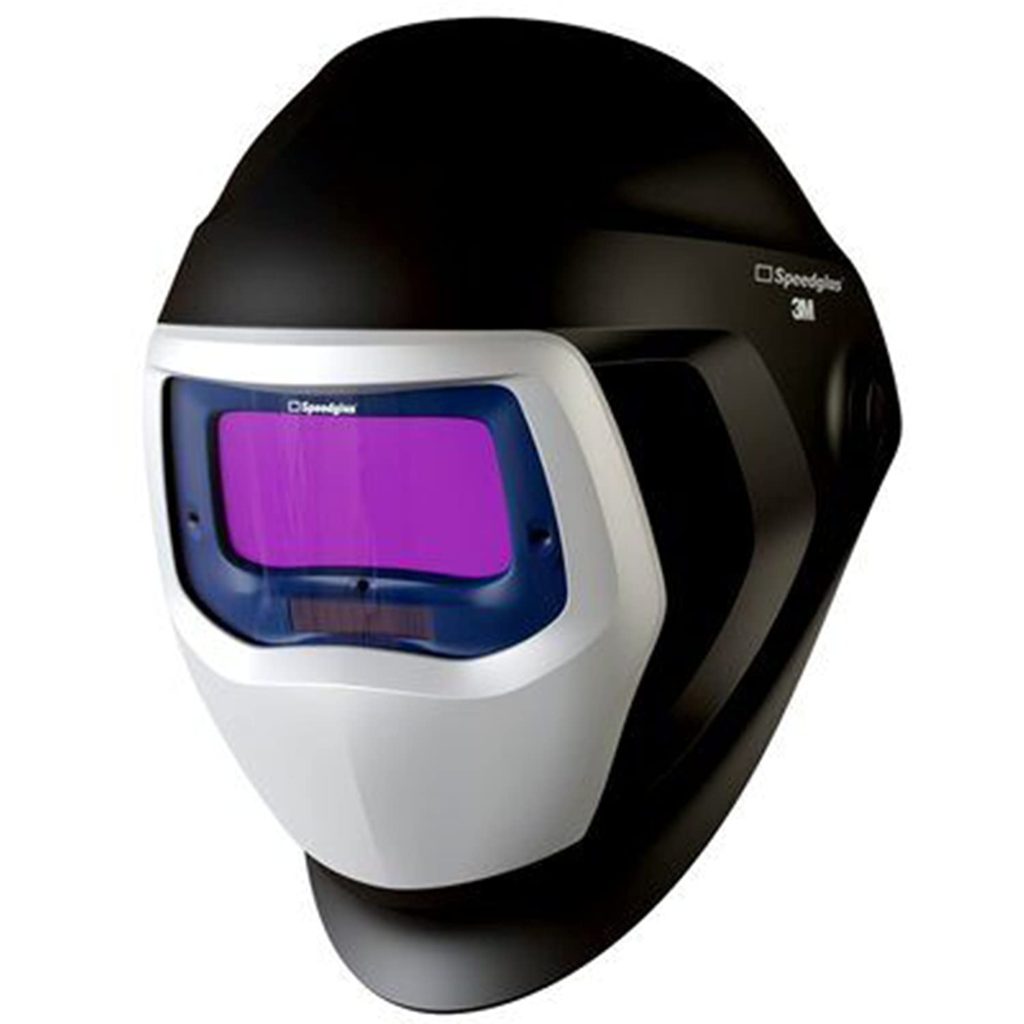Here we talk about TIG welding 101 Complete Guide.
Two metal components have only ever been bonded together by welding for ages. The development of diverse welding techniques with changes based on the size, preference, and utilization of the welding process is a result of machinery innovation. 101
To produce outstanding results, TIG welding calls for talent, tolerance, and persistence. Recent advancements in welding and equipment have made it necessary to include welding training in curricula.
In recent years, several manufacturing processes and industries have gained an advantage over rivals and require intense training.
A new path, a fresh skill, and potential professional advancement are now available. Welders with higher expertise in challenging TIG welding will have stable employment. You can select the best TIG welder and technique with the aid of this text guide.
Top 9 TIG Welders
Here are the best TIG welders.
- Lotos LTP5000D Tig Welder
- AHP AlphaTIG Welder
- Forney Multi-Process Welder
- Everlast PowerTIG Welder
- Miller Electric Maxstar 150
- Hobart 500551 EZ-TIG
- Razorweld Digital Welder
Here Read detailed Review of the Best TIG Welder
TIG Welding 101 Guide
The modern welding we see today did not exist before the early 20th century, despite the fact that welding has been practiced for generations. To weld aluminum and magnesium, the lighter metals used in the construction of airplanes, gas tungsten arc welding, also known as TIG welding, was developed.
In 1941, Mr. Russell Meredith invented this marvel of welding. The Linde division of Union Carbide purchased the rights to the GTAW patent in order to create multiple torches under the Heliarc brand. Hundreds of kilograms in weight, the first Heliarc devices were transformer-rectifier based and heavy. In World War II, welding craft parts were fairly common.
The Miller Company introduced “square waveform” inverter style TIG welding equipment in the 1970s, which pioneered the less-weight alternative in TIG welding. These machines are compact, have improved arc control, and are ideal for AC applications.
What is TIG welding and how it works
The electric current used in this TIG welding process is carried to the welding arc zone by a torch equipped with a tungsten electrode. While the other hand manually supplies filler material into the weld puddle, one hand holds the flame. The harmless argon gas shields the puddle.
While the welder is working, the foot pedal or fingertip remote aids in controlling the heat. Make it a habit to prepare and clean the metal before the process; you may do this with a brush and a clean towel. Choose the correct tungsten electrodes at all times.
TIG Welding Requires Shielding Gases
The following three types of shielding gases are always necessary for TIG welding.
1. Argon Gas
The TIG welding of different metals frequently uses pure argon gas as a shielding gas since it is so effective. For extremely fine welding, pure argon gas creates a focused, narrow arc. During welding, the arc’s outside region stays normal and does not overheat.
2. Argon and Helium Gases Mix
The amperage for the hotter welds is increased by the argon and helium combination. With the exception of mild steel, this composition works best with the majority of metals. The best heat conductor, helium, expands the heat zone to reach the weld puddle’s edge.
3. Argon and Hydrogen Gases Mix
To generate more heat, welders who work with stainless steel use an argon gas combination containing 5% or less hydrogen. It makes it possible to hot weld beads into base metals at great depths.
TIG Welding Benefits And Drawbacks
The process is extremely controlled, accurate, and challenging to learn. Although the TIG welding process has many supporters, it also has certain drawbacks.
Benefits of TIG
- It is the most accurate and controlled process of welding.
- It only a little attention to achieve a very smooth welding finish.
- It is possible to weld a wide variety of metals, including non-ferrous metals like copper, magnesium, and aluminum.
Drawbacks of TIG
- A challenging welding technique that requires excellent control and accuracy. For best results, TIG welding requires a deep arc, the right distance, and precise manipulation. A difficult process to master
- Production is hampered by the welding process is slow.
- Numerous safety issues exist, including tungsten’s radioactivity and the dangers of a powerful arc to the skin and eyes.
TIG welding Tips & Tricks
Due to the radioactive fumes and high heat arcs that are exposed during the TIG welding process, it is highly dangerous. Beginners must adhere to all safety precautions and the TIG welding process. Beginners must keep a few safety precautions in mind before handling a TIG torch.
- Use protective equipment to shield your skin and face from approaching burns. Helmets, aprons, gloves, goggles, jackets, sleeves, pants, and safety shoes are only a few examples of the wide spectrum of safety equipment.
- Workplace ventilation is important because it helps to decrease the welder’s exposure to harmful gases.
- Equipment that is properly grounded for welding, A properly grounded welding machine can prevent an electric shock.
- Dry work environment, Moisture can result in electric shock.
- Impurities and contaminants should be removed from metal surfaces since they affect the weld’s quality.
- Choose your current carefully. AC or DC current should be used depending on the type of metal and electrode. Try out your settings on a practice or scrap piece.
Ready for the TIG welding
The operation’s planning has an impact on the outcomes. The effect of TIG welding in terms of porosity, loose connections, and subpar welding will be worse the preparation. Use the correct welding equipment to avoid this, and supervise the preparation process at every stage for the best outcome.
Make sure to immediately clear off all dust, grime, oil, and debris from the metal surfaces. Use a wire brush or even a grinder to achieve cleanliness if using a cloth proves challenging. Acetone can be useful in getting rid of shavings or grease.
Just keep in mind that no matter how skilled a welder you are, your outcomes still depend on the right preparation before welding. Due to the complexity of the process compared to another welding, try to carefully monitor and prepare each step.
Process Materials For TIG Welding
The equipment must be selected properly as part of thorough preparation. Equipment requirements vary on the inputs and output required. The following details can provide a thorough understanding of the need, in accordance with their types and roles.
1. TIG torches
The water-cooled TIG torch delivers faster heat relief compared to the more popular air-cooled kind. The TIG welding process may be precisely controlled because to the way that torches are mounted on their handles.
The required heat is adjusted using the torch’s handle setting. Together, the two hands adjust the setting while the other hands supply the filling material.
2. The best Tungsten electrode selection
Although they are considered non-consumable, they can burn over time. Various electrodes are available based on the material being welded and the power source. They come in the following varieties and can be balled, truncated, or pointed.
Six electrodes are used during the TIG welding process to direct the welding arc toward the metal components being worked on.
- Tungsten electrode: They have a balled tip and produce a steady arc on aluminum and magnesium. Pure tungsten electrode. They are quite reasonably priced.
- Thoriated Electrodes: Tungsten is strengthened by the addition of thorium, and as a result, it will last significantly longer and maintain its sharpness. These are the most widely used electrodes, but while utilizing them, a ventilated area is required. The little radioactivity in the thorium has led to the safety precaution of ventilation.
- Ceriated Electrodes: These electrodes are specifically made for TIG welding small, delicate pieces in DC applications with low ampere use.
- Zirconate Electrodes: These electrodes are more powerful and highly useful in AC applications that call for more powerful electrodes. They are contaminant-resistant.
- Lanthanated Electrodes: These electrodes are adaptable and function equally well in AC and DC machines. They are able to operate with little current by creating a steady arc.
- Rare earth electrodes: These electrodes create a consistent arc for both AC and DC operations and are more durable.
3. Grinding disc

This machinery is used to continuously remove residue and debris from the base metal. Additionally, grounding the tungsten electrode’s tip is beneficial.
4. Protecting Gases or Welding Helmet
To shield the weld joint from ambient contaminants, shielding gas must be available. The kind of gas chosen also affects how heat is transferred to the workpiece. As it transfers more heat, helium is required for thicker metals, whereas thin metals use a mixture of argon and helium.
TIG welding Process in detail
The following procedures must be strictly followed in order to steer with a TIG welder:
1. Select and file the electrode.
Based on the power source and base metal to be welded, the electrode was selected. After carefully studying the technique, choose the best electrode.
If the electrode is a cylinder with an improper tip, the tip must be ground. Depending on your needs, you can grind it into a ball or a point. While DC welding calls for a pointed tip, AC welding uses a flat tip.
2. Place the electrode inside of the collet.
The rod needs to go inside the electrode holder. To provide protection, the tip should be at least 1/4 away from the sheath.
3. Set the desired setting.
The setting customizes for the job, but in general, it chooses the necessary current. The piercing site is cleaned and set. Once the functions are configured, keep the air on for five seconds.
4. Set the process’s chosen shielding gas
Shielding gas is necessary to avoid rusting due to oxidation. Steel needs argon gas combined with carbon dioxide while aluminum only needs pure argon gas.
5. Set up the welding booth.
To maintain the passage of current through the metal that needs to be welded, the metallic zone is necessary. For the process, a welding table or a metal sheet might be used.
To stabilize the metal, clean it and apply clamps. For best results, spray anti-spatter on the table and the base metal.
6. Weld the base metals
Check the electrode’s position, which should be free to move and at least an inch away from the welding zone to prevent molten debris from tangling with the electrode.
Now press your foot firmly against the pedal to quickly heat the metal and form a weld pool. If the puddle forms, place it on the boundary and touch the electrode. Once the weld pool has been formed, let the pedal go a little and manage the heat as it moves along the process. Alternate the sides of the weld as it cools to keep it clean and stop warping.
7. Count the beads.
Remove the clamps once the tacking is finished. When the puddle first appears, quickly generates heat and begins to control. Now move the rod in the direction of the electrode, which leads the electrode towards the rod where the welding will form. When welding steel, the rod follows the movement of the electrode as it moves in that direction.
8. Various weld types
Fillet: When two metals unite at an angle.
Butt: The electrodes must move in a straight line since the edges of the two metals are in contact. seen as a challenging process.
Lap: Two metal joints lying on a flat meridian against one another.
Cosmetic: The rod can be dipped in a welding pool before going on to the next area and is frequently used for conspicuous joints.
Strength welds: it is produced by continually drawing the weld pool while feeding the rod, and strength is required before the weld appears.
Conclusion
This TIG welding 101 Guide gives you a lot of answers to your question.
A popular welding process that is becoming more significant in industrial welding is TIG welding.
While it takes more time, practice, and preparation than any other welding technique, learning the process is not particularly challenging. Simply said, mastering the various TIG welding positions requires experience and the usage of fairly complicated equipment.
You may develop your TIG welding skills by using a number of TIG welding training resources and by practicing.
FAQs

With 8 years of experience a senior welding instructor and safety equipment researcher and writes articles, reviews and guidelines on helmets and other welding and safety gears at Welder Choice, and other written works have been published in various publications.



